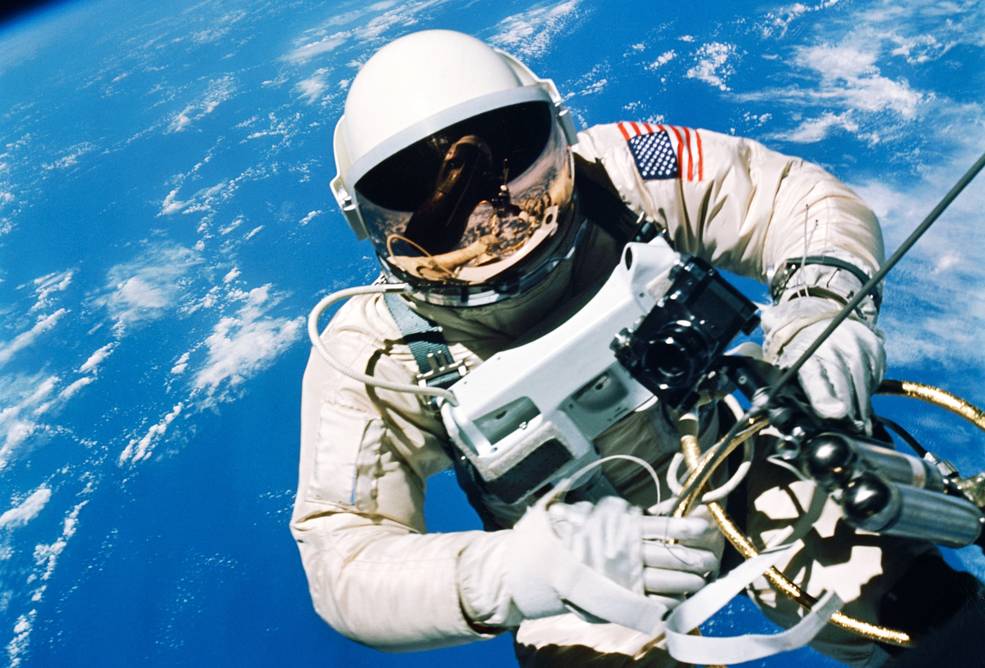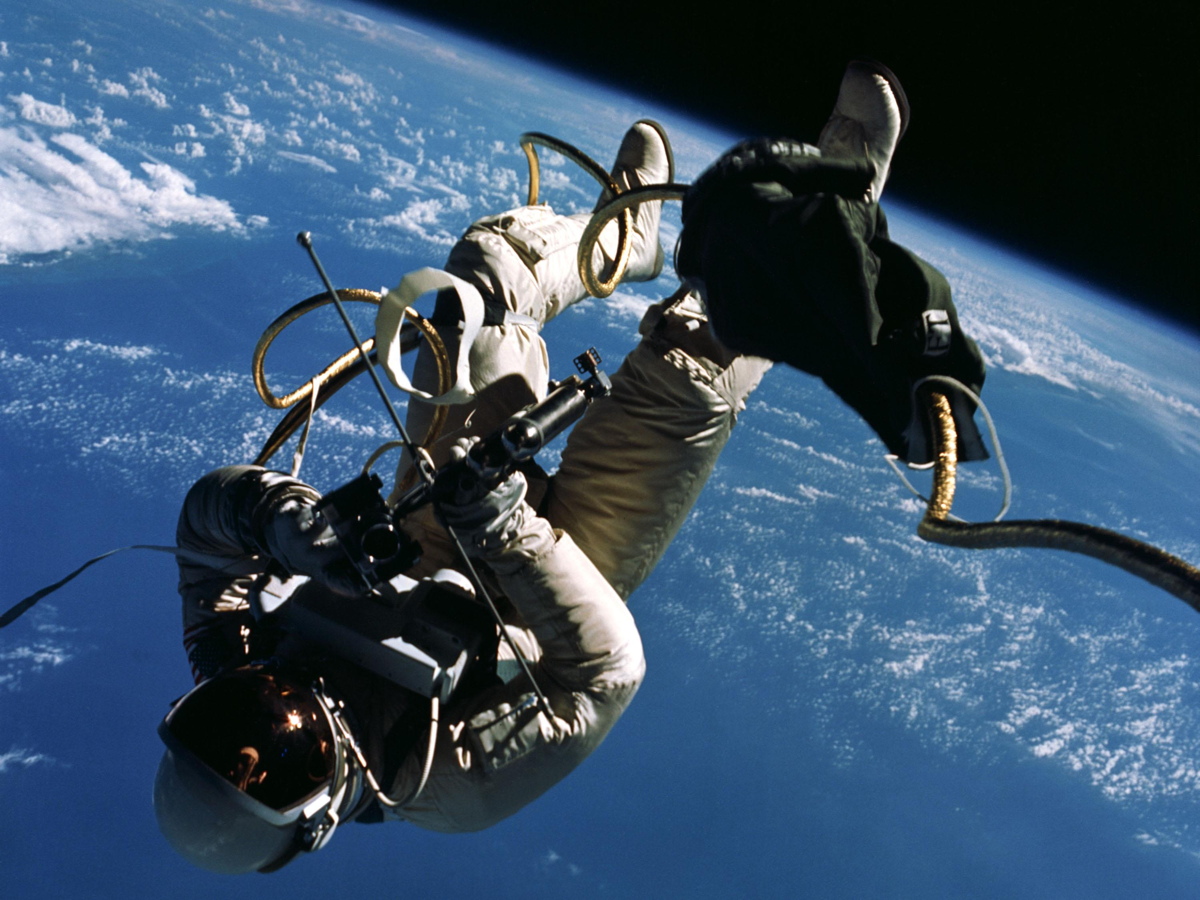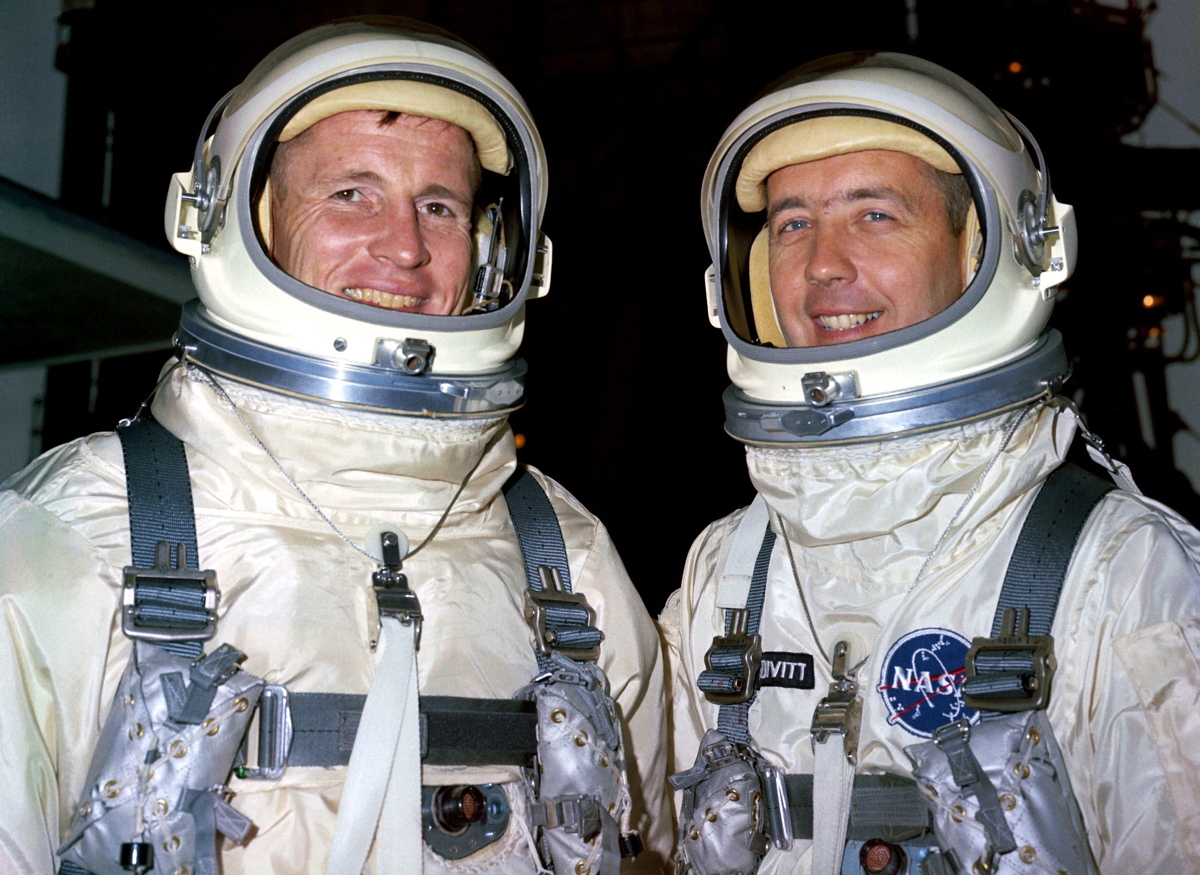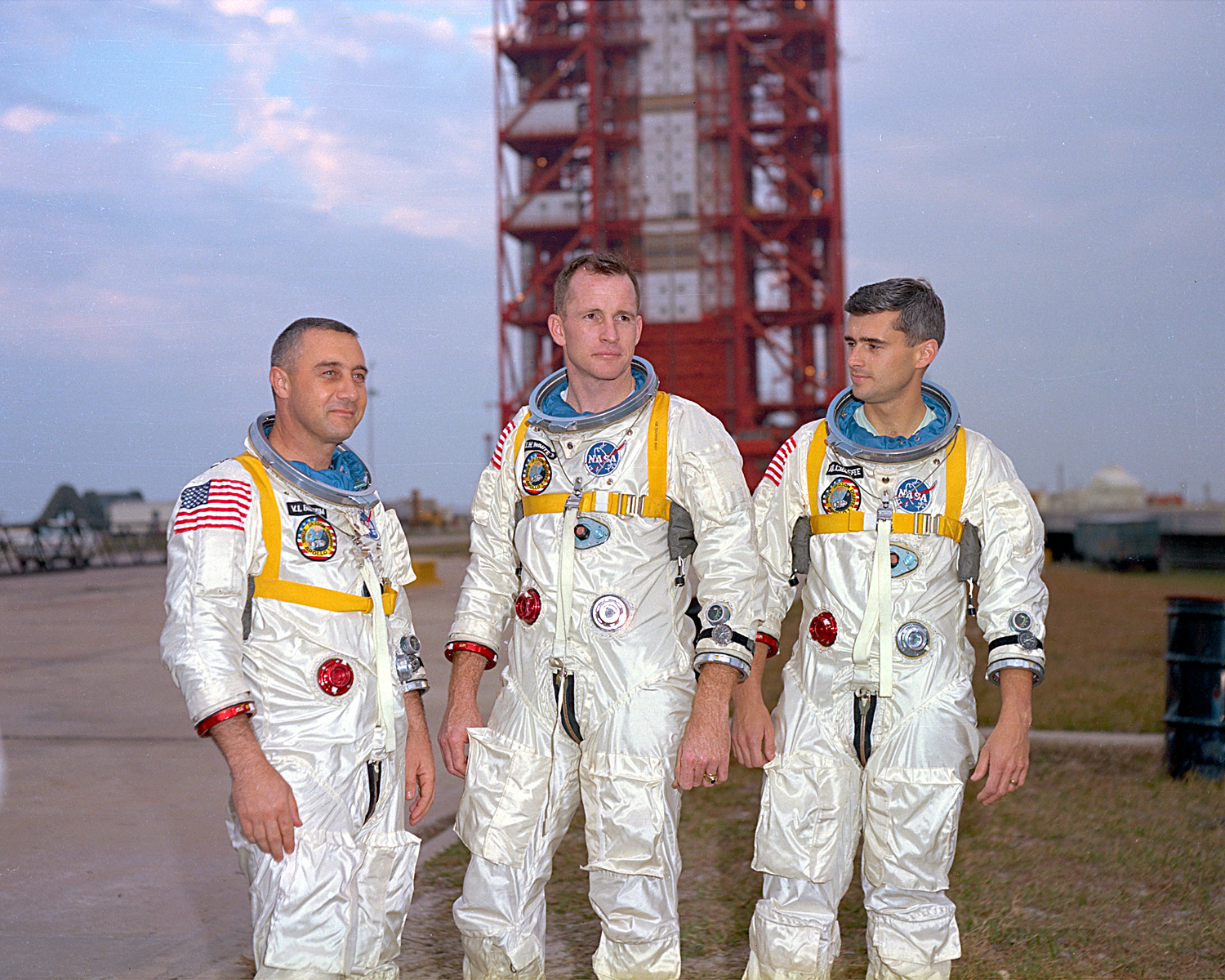Ed White: The First American to Walk in Space
Reference Article: Brief biography of NASA astronaut Ed White.

On June 3, 1965, Ed White became the first American to walk in space when he ventured outside the Gemini capsule into the vacuum of the cosmos. He was among NASA's Astronaut Group 2, an elite group of nine astronauts selected for the Gemini program; White was also the senior pilot of the first Apollo mission, where he met a fateful end. White and his two crewmates were the first American casualties of the Space Race after a fire erupted in the Apollo command module during a training exercise in 1967.
Born to fly
Edward Higgins White II was born on Nov. 14, 1930, in San Antonio, TeAxas. His father, Edward White Sr., was a West Point graduate and accomplished pilot. White Sr. flew U.S. Army airships and some of the first powered military aircraft of the century.
By age 12, White began piloting. His father took him up in a T-6 trainer airplane and allowed him to take over the controls mid-flight. "It felt like the most natural thing in the world to do," White said in an interview.
Following in his father's footsteps, White graduated from West Point and enlisted in the U.S. Air Force in 1952. He earned his wings and flew the F-86 Sabre and F-100 Super Sabre jet fighters in Germany.
Then the world changed in 1957 when the Soviet Union launched the first artificial satellite, Sputnik I, ushering in the space age. Later that year, an article describing the future role of astronauts landed in White's lap.
"The article was written with tongue in cheek, but something told me: this is it — this is the type of thing you're cut out for," White told LIFE magazine. "From then on everything I did seemed to be preparing me for space flight."
White left Germany and returned back to the United States with his wife, Patricia, and two children, Edward and Bonnie Lynn. He earned his master's degree in aeronautical engineering in 1959, the same year NASA selected the original seven astronauts for Project Mercury. Upon learning that each of them was a test pilot, White decided to join their ranks.
White earned his test pilot credentials that year and began flying experimental aircraft at Wright-Patterson Air Force Base in Ohio. His first introduction to NASA was piloting the large cargo planes used to train astronauts for zero-gravity environments. His passengers included John Glenn, the first American to orbit the earth, and Ham, a chimpanzee that was the first hominid in space.
As the Mercury program came closer to completion, NASA began focusing on the second generation of human spaceflight — Project Gemini. With a new program came the need for a new group of astronauts. NASA began open recruitment in April, 1962, and selected White and eight other pilots out of more than 200 applicants. The new recruits became famous overnight, and were nicknamed "NASA's Next Nine."
A walk in space
After many intense months of training and instruction, NASA selected White and James A. McDivitt to pilot NASA's most ambitious mission to date — Gemini 4. The four-day flight would test the limits of spaceflight and would include the first spacewalk in history. The U.S. was determined to take the lead in the race to the moon.
But the Soviets surprised the world again. Less than a week before the launch of Gemini 3, Russian cosmonaut Alexei Leonov stepped out of his Voskhod 2 spacecraft to take the title as the first man to walk in space on March 18, 1965. The Soviet Union may have held the lead, but NASA knew that the U.S. was catching up.
Not three months later, on the morning of June 3, 1965, Gemini 4 lifted off the launch pad atop the Titan II rocket. Shortly after their first orbit, White began preparing for his spacewalk by running through the checklist as he and McDivitt unpacked every piece of equipment inside the cramped capsule.
The crew began depressurizing the cabin when they approached Australia during their third revolution around the Earth. Over Hawaii, White opened the hatch to the dark expanse of space and, with a puff from his maneuvering gun, propelled himself outside the capsule. His only link to the spacecraft was a 25 foot (7.6 meter), gold-coated tether and umbilical cord, which supplied him with oxygen.

White floated in space, flying more than 100 miles (160 kilometers) above the Pacifc Ocean at speeds exceeding 17,500 mph (28,100 kph), yet he felt right at home. He radioed fellow astronaut Virgil "Gus" Grissom at Houston (CAP COM):
"That's right, CAP COM, it's very easy to maneuver with the gun," White said. "This is the greatest experience, it's just tremendous. Right now I'm standing on my head and I'm looking right down, and it looks like we're coming up on the coast of California. There is absolutely no disorientation associated with it."
In 15 minutes, White traveled from Hawaii to Florida. Soon they would be over the Atlantic and the approaching sunset. Chris Kraft, NASA's flight director at Houston, was worried about White's ability to function in the pitch black of nighttime space. When McDivitt finally asked, "Gus, this is Jim. Got any message for us?" Kraft didn't hesitate to override the communication system and order White to return to the capsule.
After some reluctance, White followed the order and began to pull himself back into the capsule. "It's the saddest moment of my life," White conceded as he maneuvered back towards the hatch. The spacewalk lasted a total of 23 minutes, twice as long as Leonov's 10-minute float.
"Ed White might have been euphoric during his space walk, but whatever he felt was tame compared to the American public's reaction," Kraft wrote in his book, "Flight: My Life in Mission Control" (Plume, 2002). "The country went wild with excitement over their space program. Ed's space walk completely eclipsed the Russians. For the first time I saw real optimism out there over our chances of winning the race to the moon."
White and McDivitt spent four days in the Gemini spacecraft, making 62 orbits around the world and covering a total of 1,609,700 miles (2,590,600 km) before they safely touched down in the Atlantic Ocean.

Tragedy on Apollo
Having proved himself during Gemini 4, NASA selected White to be Senior Pilot for the first Apollo mission. He was joined by Gus Grissom as command pilot and Roger Chaffee as pilot. Apollo 1 would test the new three-man Apollo command module while in Earth's orbit to prepare for future missions to the moon.
On Jan. 27, 1967, the crew entered the Apollo I command module for a dry-test on the launch pad. From the start, the practice test was plagued by issues, including the capsule's communication system. Out of frustration, Grissom exclaimed "How are we going to get to the Moon if we can't talk between three buildings!"
A minute later, tragedy struck. At 6:31 p.m. the word "Flames!" was heard over the radio from one of the astronauts. In a matter of seconds the pure-oxygen environment of the cabin caused the flames to fill the entire capsule. The fire took the lives of all three astronauts inside.
"This determination to make sure these men did not die without cause, I believe, gave us all the strength to continue our job landing men on the moon," Kraft wrote. "It also brought us all closer together and made our responsibilities crystal clear. For some, it was more than they could bear. The fire on the pad took its toll beyond the deaths of three brave men."

White's legacy
The Apollo 1 tragedy forced NASA to rethink the safety of human spaceflight and redesign the Apollo command module. The tragedy became the first and last fatal training accident in NASA’s history. Every year NASA honors the lives of fallen astronauts during the Day of Remembrance.
White was buried with full military honors at West Point Cemetery. In 1997 president Bill Clinton posthumously awarded White the Congressional Space Medal of Honor.
A picture of White performing his spacewalk is encoded in the Golden Record on the Voyager spacecraft. The record, which has already left our solar system, will fly through the cosmos for eons, forever memorializing those 23 minutes of joy and awe White felt floating in space.
Additional resources:
- Watch Ed White's EVA with commentary during an interview with ABC.
- Learn about other extreme human spaceflight records.
- See more photos in this gallery of the first American spacewalk.
Join our Space Forums to keep talking space on the latest missions, night sky and more! And if you have a news tip, correction or comment, let us know at: community@space.com.
Get the Space.com Newsletter
Breaking space news, the latest updates on rocket launches, skywatching events and more!
Tim Childers was a freelance science journalist with a background in physics and science communication. He studied Physics at the University of Colorado Boulder, with his research focused on modeling the dynamics of the accretion disks surrounding black holes. He then went on to do an internship at the NASA Goddard Space Flight Center using his film talents to create videos, news stories, and interviews. Nowadays, Tim is an exceptionally curious data scientist who loves using data to tell stories to a diverse audience.










